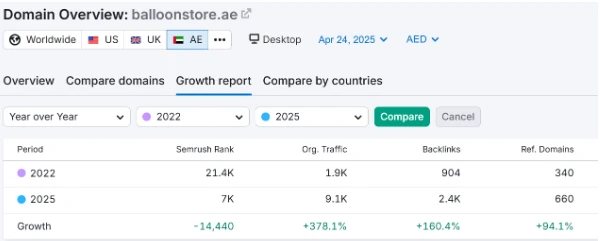Generative AI: Understanding the Business Implications and Cutting Through the Hype
- digitalmanqoosh
- June 28, 2023
- Uncategorized
- 0 Comments
AI-Enabled Technologies Dominate the Innovation Trigger Slope in Gartner 2023 Hype Cycle for Talent Acquisition Technologies
For example, within Keysight, we’re already utilizing AI tools to help optimize SEO across all our content and generate promotional copy that reflects our voice. Among product features and customer feedback, this year IBM showcased the capabilities of our “low-code” conversational AI building capability called Actions. Actions makes it dramatically easier for technical and non-technical users to create conversational flows without having to worry about orchestration and unexpected turns in a conversation. This next generation of watsonx Assistant also offers new templates businesses can use to get up to speed quickly based on their domain. Finally, we have also included new integrations and capabilities that enable integrations to be shared across multiple actions. The current wave of emotion AI systems is being driven by the proliferation of virtual personal assistants (VPAs) and other AI-based technology for conversational systems.
While AI high performers are not immune to the challenges of capturing value from AI, the results suggest that the difficulties they face reflect their relative AI maturity, while others struggle with the more foundational, strategic elements of AI adoption. Respondents at AI high performers most often point to models and tools, such as monitoring model performance in production and retraining models as needed over time, as their top challenge. By comparison, other respondents cite strategy issues, such as setting a clearly defined AI vision that is linked with business value or finding sufficient resources. In many ways, generative AI will push us forward and allow humans to take on higher-level work. In software development, just to give one example, companies will be able to build sophisticated software far faster, as developers focus on complex programming and design instead of pixel-pushing. With the introduction of generative AI into low-code/no-code platforms, software development will become even more democratized and accessible.
No. 2: Generative AI in material science
In this session, Helen Poitevin, Distinguished VP Analyst, Gartner, examined the business value of AI and its intersection with talent and skills. The online survey was in the field April 11 to 21, 2023, and garnered responses from 1,684 participants representing the full range of regions, industries, company sizes, functional specialties, and tenures. Of those respondents, 913 said their organizations had adopted AI in at least one function and were asked questions about their organizations’ AI use. To adjust for differences in response rates, the data are weighted by the contribution of each respondent’s nation to global GDP. AI high performers are much more likely than others to use AI in product and service development. In essence, generative AI in software development acts as a “white-collar assistant,” empowering individuals to think more creatively and engage in higher-level strategic work.
- However, this perspective overlooks the true potential of generative AI in this context.
- The result is to find, for example, materials that are more conductive or greater magnetic attraction than those currently used in energy and transportation — or for use cases where materials need to be resistant to corrosion.
- Computer vision, data labeling and annotation, cloud AI services, and intelligence applications are the most mature applications of AI, according to Gartner’s 2023 AI Hype Cycle.
- Gartner noted that numerous emerging technologies are enabling enterprises to create a culture of mutual trust and awareness of shared risks in decision-making between many teams.
- It helps extract information and insights from existing text and other documents with Natural Language AI and Smart Document Understanding to accelerate and augment business decisions and processes.
Gartner outlined why AI engineering is foundational to the evolution of AI, supporting autonomy, change management, decision engineering, Infrastructure and operationalization. Gartner analyst Arun Chandrasekaran explored the current state of generative AI at Gartner IT Symposium/Xpo on the Gold Coast. “It is an interesting concept that goes back to the beginning of cybersecurity in the 1950s when virtually all of the security problems were human-sourced,” Enderle said.
Beyond ChatGPT: The Future of Generative AI for Enterprises
In this session, Arun Chandrasekaran, Distinguished VP Analyst at Gartner, discussed the current state of generative AI – key use cases, technology landscape – and how it will evolve in the future. Gartner noted that numerous emerging technologies are enabling enterprises to create a culture of mutual trust and awareness of shared risks in decision-making between many teams. Technologies identified by Gartner as key to enabling the pervasive cloud include augmented FinOps, cloud development environments, cloud sustainability, cloud-native, cloud-out to edge, industry cloud platforms, and WebAssembly (Wasm). The report also predicted that over the next 10 years, cloud computing will evolve from a technology innovation platform to become pervasive and an essential driver of business innovation.
Yakov Livshits
Founder of the DevEducation project
A prolific businessman and investor, and the founder of several large companies in Israel, the USA and the UAE, Yakov’s corporation comprises over 2,000 employees all over the world. He graduated from the University of Oxford in the UK and Technion in Israel, before moving on to study complex systems science at NECSI in the USA. Yakov has a Masters in Software Development.
Davis further adds a note of caution, reminding that these technologies, being in their nascent stages, carry a degree of uncertainty regarding their evolution. However, she posits that early adopters might gain significantly despite the inherent risks. Labor market intelligence and internal talent marketplace are both at the Peak of Inflated Expectations as their tremendous potential is realized and calibrates against reality. By 2025, Yakov Livshits the recruiting technology landscape will further consolidate, with 20% fewer point solution vendors in the marketplace, according to Gartner. Ever-changing priorities in the recruiting function call for a continuous review of the technology landscape and consideration of new technologies. By 2023, Gartner is expecting 75% of organizations that benefit from distributed enterprises to see revenue growth 25% faster than competitors.
As companies learn to unlock its potential, individuals use it to boost productivity, and legislators scratch their heads over-regulating it, AI will become increasingly omnipresent in everything we do. For people who are blind or have low vision, a new Point and Speak feature in the Magnifier app will let them aim the camera at objects with buttons like a microwave and hear their phone say which their finger is touching. For people with medical conditions like ALS that can rob a person of the ability to speak, iOS 17 can create a synthetic voice that sounds like them after they read 15 minutes of text prompts.
Among the technologies supporting the expansion of human-centric security and privacy cited by Gartner were AI TRiSM, cybersecurity mesh architecture, generative cybersecurity AI, homomorphic encryption, and postquantum cryptography. “The popularity of many new AI techniques will have a profound impact on business and society,” Gartner Vice President Analyst Arun Chandrasekaran said in a statement. Hype around generative AI is leading a renewed focus on the capacity of AI to displace workers and transform jobs – including in HR.
And overall, just 23 percent of respondents say at least 5 percent of their organizations’ EBIT last year was attributable to their use of AI—essentially flat with the previous survey—suggesting there is much more room to capture value. Generative artificial intelligence will improve digital products’ quality, performance and accessibility, while reducing time to market. To gain these competitive advantages, software Yakov Livshits engineering leaders should introduce generative AI now by enacting changes to people, processes and tools. Still, it did include other subsections, including casual AI, machine learning, generative design AI, foundation models, and digital humans. Customer service can be an area of business operations where a lot of routine, repetitive procedures are interspersed with occasional deeply complex and critical tasks.
Gartner places generative AI on the peak of inflated expectations on the 2023 Hype Cycle for Emerging Technologies – ZAWYA
Gartner places generative AI on the peak of inflated expectations on the 2023 Hype Cycle for Emerging Technologies.
Posted: Tue, 22 Aug 2023 07:00:00 GMT [source]
Hype Cycles tap into deep research, surveys and conversations with technology suppliers and Gartner clients. The innovation trigger starts when an event, like a technological breakthrough or a product launch, gets people talking. Generative AI enables systems to create high-value artifacts, such as video, narrative, training data and even designs and schematics. Generative AI is one way of creating synthetic data, which is a class of data that is generated rather than obtained from direct observations of the real world. This ensures the privacy of the original sources of the data that was used to train the model. For example, healthcare data can be artificially generated for research and analysis without revealing the identity of patients whose medical records were used to ensure privacy.













